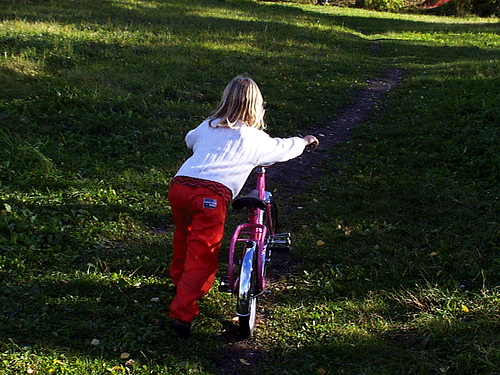
Real
True Narratives
Technical and Analytical Readings
Photographs
Documentary and Educational Films
Imaginary
Fictional Narratives
Poetry
Music: Composers, artists, and major works
Wolfgang Amadeus Mozart, Piano Concerto No. 24 in C Minor, K. 491 (1786) (approx. 29-34’), is perhaps the darkest of these works, concluding nevertheless on tones of reassurance and encouragement to press on. “The brooding darkness of this work makes it unique among Mozart’s concertos. Only one other is in a minor key—the D minor (K.466, of 1785)—and that one, though a favorite of ensuing generations of emotionally susceptible Romantics, actually ends with more than a whiff of major-key merriment. Not so the C minor, whose overriding sentiment might be described as despairing. Of course, this is not raw despair that is put on display; we can depend on Mozart to temper it with a certain measure of elegance.” Top performances on disc are by Haskil (Cluytens) in 1955, Gulda (Keilberth) in 1960, Gould (Susskind) in 1961, Perahia in 1975, Uchida (Tate) in 1988, Rudolf Serkin (Abbado) in 1987, Uchida in 2009, Sudbin (Vänskä) in 2014, Andsnes in 2021, Vogt in 2022, and Le Sage (Leloux) in 2022.
Russian viola and violin sonatas, music of serious concern:
- Mikhail Glinka, Viola Sonata in D Minor (1828) (approx. 17-18’)
- Alexander Winkler, Sonata in C Minor for Viola and Piano, Op. 10 (1902) (approx. 18’)
- Nikolai Medtner, Sonata for Violin and Piano No. 1, Op. 21 (1910) (approx. 20 ‘): “This Sonata of a rare beauty is dedicated to his wife, Anna Mikhailovna Medtner. They first met in 1896 when Anna was 18 years old and Nikolai 16. Later that year he composed a Prelude that was the first piece he dedicated to Anna inscribing it: 'To my best and dearest friend'.”
- Paul Juon, Sonata in D Major for Viola and Piano, Op. 15 (1910) (approx. 22’)
- Sergey Vasilenko, Viola Sonata, Op. 46 (1923) (approx. 19’)
- Nikolai Medtner, Violin Sonata No. 2, Op. 44 (1925) (approx. 39-41 ‘): “The massive opening movement is imbued with a sense of deep concentration as if a serious outcome is at stake. Next comes a tema con variazione, based on a modest, rather thoughtful, theme of Russian flavour; the final movement is intense and mainly exuberant, with writing of considerable tension under the surface.”
- Vladimir Kryukov, Viola Sonata No. 1, Op. 15 (1921, rev. 1933) (approx. 20’)
- Vissarion Shebalin, Viola Sonata in F Minor, Op. 51, No. 2 (1954) (approx. 20’)
- Revol Bunin, Viola Sonata in D Minor, Op. 26 (1955) (approx. 21’)
- Valerian Bogdanov-Berezovsky, Viola Sonata, Op. 44 (1956) (approx. 17’)
- Varvara Giagerova, Suite for Viola and Piano, Op, 8 (1969) (approx. 15’)
- Grigory Frid, Viola Sonata No. 1, Op. 62 (1971) (approx. 13-14’)
- Grigory Frid, Viola Sonata No. 2, Op. 78 (1985) (approx. 24’)
- Ivan Sokolov, Viola Sonata (2005) (approx. 12’)
These works by Jon Appleton evoke concern:
- Sonata for Cello & Piano (2004) (approx. 17’)
- Violin Sonata No. 2 (2007) (approx. 17’)
Other compositions:
- William Walton, Cello Concerto, C. 65 (1956) (approx. 28-32’): Performed as a ballet, it is “filled with striking images, including a recurring motif of the women falling or bending backward over the man's outstretched arms.” Top performances feature Piatigorsky in 1957, Wallfisch in 1992, Cohen in 1995, Wispelwey in 2009, Watkins in 2015, Capuçon in 2024, van der Heijden in 2024, and Lovell-Jones in 2025.
- John Mayer, Violin Concerto No. 2, Sarangi ka Sangit (1978) (approx. 26’)
- Jonathan Mayer, Sitar Concerto No. 2 (approx. 25’)
- Arnold Schoenberg, Chamber Symphony (Kammersymphonie) No. 2 in E-flat Minor, Op. 38 (1906, rev. 1939) (approx. 20-22’): Schoenberg took decades to complete the work, expressing some of his concerns about it as follows: “As to the shaping, it was generally compelling, but it suffered much by the tempi being too slow, some of them far too slow. E.g. Bar 219, the Animando (and likewise in all analogous places) of course means “schwungvoll” in German” [sic] [. . .] I feel it is important to correct everything for future performances.”
- Hans Gál, Piano Quartet in A Major, Op. (1926) (approx. 27’), composed for and dedicated to Paul Wittgenstein, this work expresses the value in its melody (carried mainly by the violin) and in the interaction between the players.
- Guy Ropartz, Cello Sonata No. 2 in A Minor (1919) (approx. 24-26’)
- Alfred Schnittke, Violin Concerto No. 3 (1978) (approx. 25-34’)
- Dmitry Shostakovich, Violin Concerto No. 1 in A minor, Op. 77 (1948) (approx. 35-42’)
- Sergei Prokofiev, Violin Concerto No. 1 in D Major, Op. 19 (1917) (approx. 21-23’)
Music: songs and other short pieces
- The Hoosiers, “Worried About Ray” (lyrics)
- Bee Gees, "How Deep Is Your Love" (lyrics)